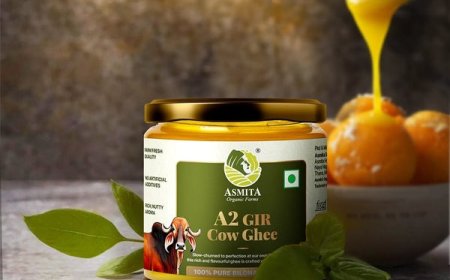Two Kings One Throne

Streetwear today is more than just fashion its a form of identity, rebellion, culture, and art. At its core are brands that have redefined what it means to wear meaning. Two stand at the forefront of that revolution: Corteiz and Off-White. One represents raw, underground culture refusing to bow to any fashion authority. The other reshaped the fashion industry from within, turning streetwear into luxury without ever losing touch with the streets. Their impact is undeniable, but their paths are fundamentally different. Corteiz is the voice of the present, rising from the grassroots. Off White is the echo of a vision that changed everything. This is not just a brand comparison its a cultural standoff between authenticity and elevation.
Origins: Built vs Broken In
Off-White was founded by Virgil Abloh in 2012. It was never small, not in vision or ambition. Coming from architecture and Kanye Wests creative team, Abloh had his eye on global change from day one. His goal wasnt to create clothes it was to challenge systems. Off-White was a luxury brand that wore sneakers. It was intellectual, disruptive, and calculated. Corteiz, on the other hand, started in 2017 in the shadows. No PR, no press kits just street-level energy and encrypted marketing. Clint419 built Corteiz like a resistance movement. It wasnt meant to sell out stores; it was meant to speak to people like him. Where Off-White had a blueprint, Corteiz was a wildfire.
Style and Design Philosophy
When you look at Off-White, you're looking at fashion with academic undertones. Each piece feels like a thesis quotation marks, zip ties, deconstruction, and irony all work together to provoke questions. Is this luxury? Is this streetwear? Why cant it be both? Off-Whites design identity lies in that tension. Corteiz, meanwhile, doesnt pose questions. It gives answers. Its clothing is about claiming space. Its tactical, bold, sometimes aggressive, with slogans like RULES THE WORLD printed across militaristic garments. Where Off-White is analytical, Corteiz is emotional. It doesnt want to explain itself it wants to assert itself.
Communication and Brand Voice
Off-White always spoke with a global voice. Campaigns were sleek, collaborations strategic, messaging intentional. Abloh talked to the fashion world in a language it could respect references to architecture, art, minimalism. He didnt shout he reasoned. Corteiz, in contrast, speaks like the streets it was born in. The tone is rebellious, private, even confrontational. There are no glossy magazines or fashion shows. Corteiz uses social media like a cipher, dropping clues, codes, and hints. It speaks only to those who are listening closely. Off-White built a language to be understood by everyone. Corteiz built one to be understood only by the few who really live it.
Audience: Who They Dress
Off-White has dressed everyone from runway models to athletes, rappers to CEOs. It has transcended niche fashion and become a global identity. To wear Off-White is to declare that you know culture. But Corteiz operates differently. It doesnt want to dress everyone only those who earned the right. If you know, you know. Corteiz is not interested in making fashion accessible; its interested in making it meaningful. You dont buy Corteiz from a shop window. You find it, you chase it, or you miss it. That exclusivity isn't about money its about understanding the brands language. Off-White dressed the world. Corteiz dresses the chosen.
Scarcity and Supply Strategy
Scarcity fuels desire, and both brands understand this perfectly but they use it very differently. Off-White limits products through pricing and collaborations. It creates a gap between availability and demand, making its pieces feel rare and exclusive. Corteiz does the opposite: it limits through secrecy and timing. Pop-ups vanish as fast as they appear. Drops are announced in stories or through word of mouth. You dont just shop Corteiz you hunt for it. Off-White gives you luxury scarcity. Corteiz gives you guerrilla scarcity. One feels curated. The other feels like a chase through back alleys.
Collaborations and Impact
Off-White made collaboration an art form. From Nikes The Ten to IKEA, Evian, and Louis Vuitton, Abloh turned everyday products into fashion relics. These werent just business moves they were statements. Corteiz, far more selective, shook the world with just one major collab: its Nike Air Max 95 drop. But what made it iconic wasnt the sneaker it was the way it was released. Hundreds ran through the streets of London to chase their pair. It wasnt a product launch; it was a movement. Off-White collaborates to expand. Corteiz collaborates to explode.
Celebrity Influence vs Community Power
Off-White grew with the support of the worlds biggest names. Virgils proximity to Kanye West, Drake, Rihanna, and fashion insiders gave the brand instant credibility. The co-signs mattered, not because they were strategic, but because they were authentic. Still, Off-White thrived with top-down influence. Corteiz works from the opposite direction. Its power doesnt come from celebrities it comes from the crowd. The average fan in line for a Corteiz drop has more influence in that moment than any billboard or influencer. Corteiz is about community power. Its grassroots. Its energy from below.
Global Presence vs Local Identity
Off-White was built for the world. From Milan to Tokyo, New York to Paris, it speaks an international language. Its a fashion passport that crosses boundaries of class and geography. Corteiz, while gaining international recognition, still feels entirely British and more specifically, London. You can feel the grime scene, the council estates, the slang, the borough pride in every design. And yet, that local pride is what makes it so magnetic globally. Off-White adjusts to the city it enters. Corteiz brings its city with it.
Evolution and Legacy
Off-White now lives beyond Virgil. After his passing, the brand faces the challenge of maintaining its essence without becoming a tribute act. It is evolving with new designers, but its legacy is cemented. It opened doors that will never close again. Corteiz is still in its rise. Clint419 remains at the helm, guiding it like a street general with a master plan. The brand hasn't even reached its peak, and that's what makes it dangerous. Off-White changed the system. Corteiz may not care about the system at all its busy building a new one.
Cultural Symbolism
Off-White symbolizes possibility. It says a kid from Chicago can rewrite the rules of luxury. It says Black creativity belongs in fashions highest rooms. It says sneakers deserve museums. Corteiz symbolizes control. It says the culture belongs to the people who made it. It says respect isnt bought its earned. It says you dont need validation from institutions to have power. Where Off-White offers inspiration, Corteiz offers protection. One breaks barriers. The other guards borders.
The Verdict: No Winner, Just a War of Worlds
Corteiz and Off-White dont need to beat each other. They represent two different truths. Off-White showed the world that streetwear could go high. Corteiz shows the world that it never needed to. Off-White is a torch passed on. Corteiz is a flame still rising. The question isnt which is better. The question is: what do you believe streetwear is meant to be? A global force of art and fashion? Or a coded expression of loyalty, culture, and raw reality?
Whatever your answer, one thing is certain the throne of streetwear is now shared by two kings. And their crowns couldnt be more different.




































